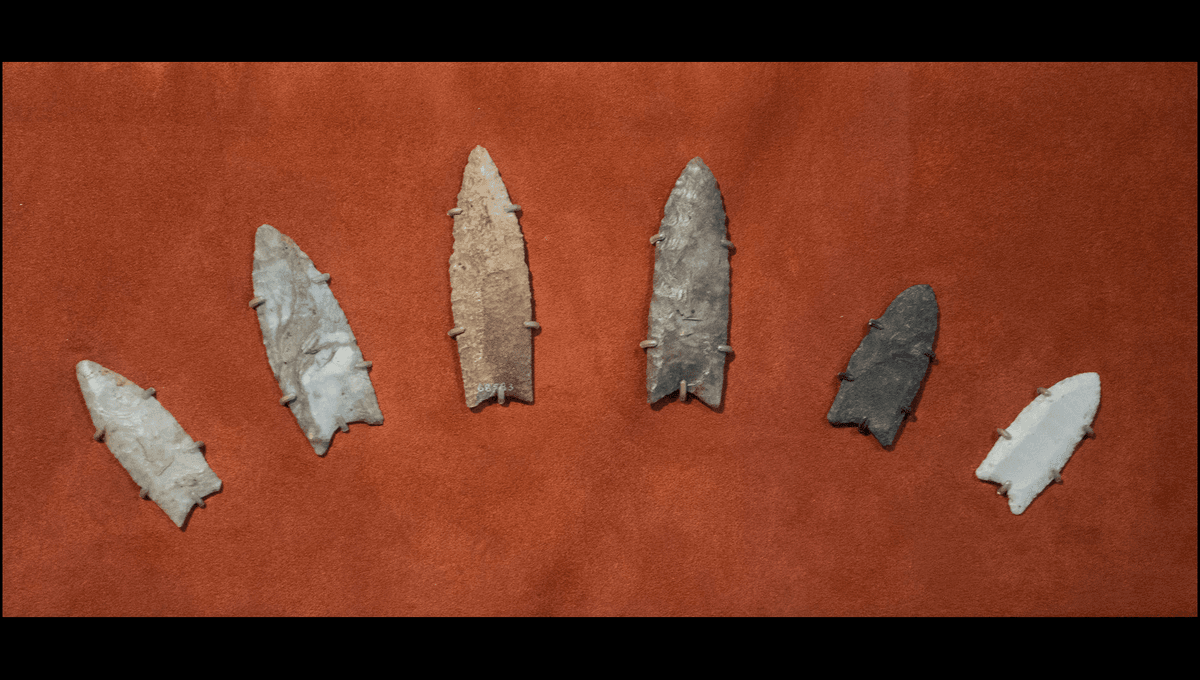
Across North America, a consistent style of tools can be found dating from around 13,500 to 12,700 years ago. These, and the people who made them, are known as Clovis, after a site in New Mexico where a large array of such tools were found in the 1930s.
The similarity of the tools across great distances and times has led to speculation the tool makers shared a common culture in other ways as well, but this is currently not something anyone can confirm. Language doesn’t fossilize, nor do we know anything about their music or dance. Their diet must have been very different in what is now Mexico compared to Missouri, but whether this shaded into each other or had sharp breaks is also unknown.
The abundance of Clovis tools, and the paucity of older implements, once led anthropologists to conclude that the Clovis People were the first human inhabitants of North America, and presumably the Americas in general. This was tied to the Beringia-first hypothesis, which held that humans arrived in the Americas via an Ice-Age land bridge over the Bering Strait thought to have led to an ice-free corridor into the heart of North America.
Gradually, the evidence has built up that neither of these were true. Tools, footprints, and feces prove humans arrived in North America thousands of years before such a corridor opened up, although some anthropologists argue for a separate, later Beringia migration that may have brought the Clovis technology. Moreover, a different style of tool use was present well before the oldest Clovis technology.
Nevertheless, even if the Clovis people were not the first to make the epic journey from Asia to the Americas and spread across the continent, the number of tools they left behind are testimony to their success, far surpassing their predecessors.
Questions about ancient peoples inevitably turn to their relationship with modern populations in the same locations. Where there are no written records, this requires DNA to answer. Only one body has been found that could be identified as Clovis: a boy buried in what is now Montana and surrounded by Clovis tools, referred to as Anzick-1. Although at one time thought to be younger than the stone and antler tools at the site, more advanced measurements confirm Anzick-1 as being from the Clovis People.
The Anzick Boy’s DNA suggests a close relationship to modern Native Americans. It appears that the surviving North American first nations, as well as great civilizations such as the Maya and Aztecs, were primarily descended from the Clovis people. If there were other pre-Columbus arrivals, of which we know the Vikings were one, their contribution to the modern gene pool was relatively small.
The first feature that stood out about the Clovis tools is how frequently they are intermingled with the bones of giant extinct species such as mammoths, mastodon, and gomphotheres. It has been confirmed these giants and other great megafauna were hunted, not just scavenged.
This has created a perception of the Clovis People as big game hunters. Hunting these animals would have come at great risk, so the Clovis People must have gained commensurate benefits from them in meat, fur, and ivory – but there’s now debate as to whether they were as big a part of the diet as the bones led us to suspect.
The Clovis People’s ending has created as much debate as their origins and is possibly further from being resolved. Did they decline because of climate changes or as their own overhunting of megafauna made their lifestyle nonviable, or did technological change simply mean people started making different tools without necessarily changing other aspects of the culture?
Clovis technology disappears from the fossil record around the time of the Younger Dryas event, when the world plunged back to Ice-Age conditions after having briefly left them. On the one hand, this seems unlikely to have been a coincidence. On the other, there is evidence for a relatively smooth transition from Clovis style of tool-making to subsequent methods, which may indicate cultural continuity.
Although the Clovis culture is generally used to describe tools from North and Central America, there are many commonalities with the Fishtail points from the same period in South America.
All “explainer” articles are confirmed by fact checkers to be correct at time of publishing. Text, images, and links may be edited, removed, or added to at a later date to keep information current.
Source Link: Who Were The Clovis People?